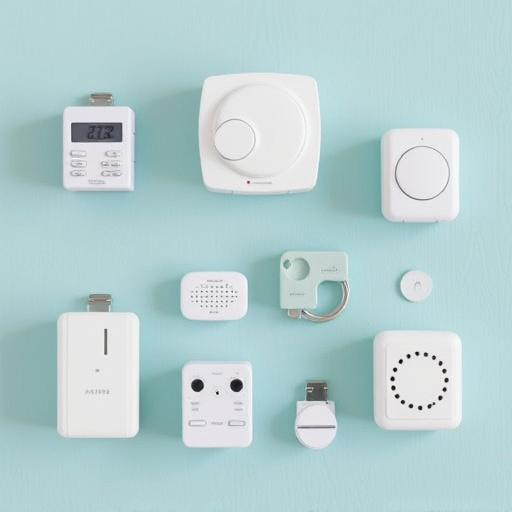Electronic personal safety alert systems, featuring powerful sirens on portable devices, protect individuals in emergencies by offering swift responses. Their key advantage lies in preventing false alarms through precise sensors that differentiate genuine crises from accidental triggers. This minimizes embarrassment for users and optimizes emergency services by reducing unnecessary responses, ensuring efficient resource allocation. Personal Safety Sirens, despite facing challenges from false alarms, remain vital tools for individual security when balanced with measures to minimize activations, addressing neighborhood disruption and resident stress. These systems enhance personal security without overburdening emergency services through customizable settings and precise control, offering peace of mind for solo dwellers.
“Staying safe in an ever-connected world is paramount, and electronic personal safety alert systems offer a modern solution. These innovative devices, often featuring personal safety sirens, have revolutionized individual security. From understanding their operation to exploring benefits and drawbacks, this article delves into the effective use cases of these electronic alerts. Learn how personal safety sirens work and why they are becoming essential tools for self-protection, despite potential false alarm concerns.”
- Understanding Electronic Personal Safety Alert Systems
- How Personal Safety Sirens Work
- Benefits and Drawbacks of False Alarm Systems
- Effective Use Cases for Electronic Alerts
Understanding Electronic Personal Safety Alert Systems
Electronic personal safety alert systems are designed to protect individuals in various situations, from personal emergencies to home security. These systems typically include a portable device equipped with a loud siren that can be activated manually or automatically in response to specific triggers. When set off, the personal safety siren emits a powerful sound to attract attention and deter potential threats, ensuring help arrives promptly.
One of the key advantages is their ability to prevent false alarms, which are common issues with traditional alarm systems. These devices often incorporate sensitive yet precise sensors that differentiate between genuine emergencies and accidental triggers, minimizing unnecessary alerts. This feature not only saves users from embarrassment but also helps emergency services by preventing them from responding to non-critical situations, ensuring resources are allocated efficiently.
How Personal Safety Sirens Work
Personal Safety Sirens are designed to protect individuals in situations where help may be needed, but they are also prone to false alarms. These devices typically consist of a main control unit connected to one or more loudspeakers or sirens. When activated, either manually or through integrated sensors, the siren emits a powerful sound that can attract attention and alert others to potential danger. The control unit often includes features like automatic sensors for detecting emergency situations, such as smoke or extreme temperature changes, and manual activation options for when immediate assistance is required.
To prevent unnecessary distress, many personal safety sirens are equipped with mechanisms to differentiate between genuine emergencies and false alarms. This may include motion sensor technology that distinguishes between people moving in the vicinity and potential intruders, or sensitive audio microphones capable of distinguishing emergency sounds from ordinary household noises. Such features ensure that alerts are accurate, minimizing false alarm instances and preserving the effectiveness of the system for genuine safety concerns.
Benefits and Drawbacks of False Alarm Systems
While electronic personal safety alert systems, often featuring a personal safety siren, offer significant benefits in terms of enhancing individual security and peace of mind, they also come with drawbacks that should be considered. One of the primary advantages is their ability to deter potential intruders quickly and loudly, providing an effective deterrent against unwanted entry or dangerous situations. Additionally, these systems can alert neighbors or emergency services promptly, potentially saving valuable time during emergencies.
However, false alarm systems pose a significant challenge. Frequent or unintentional activations can lead to neighborhood irritation, increased stress for residents, and even potential legal consequences in some areas. Moreover, false alarms may desensitize individuals to genuine danger signals, undercutting the system’s effectiveness as a safety measure. Balancing these factors is crucial when implementing personal safety siren systems to ensure they serve their intended purpose without causing unnecessary disruptions or losing their impact.
Effective Use Cases for Electronic Alerts
Electronic personal safety alert systems, equipped with features like a personal safety siren, prove invaluable in various scenarios where quick alerts can make all the difference. One effective use case is in emergency situations, where individuals can activate the siren to attract attention and signal distress instantly. This is particularly beneficial for those who live or travel alone, as it can prompt nearby help to respond promptly.
Another notable application is in mitigating false alarm concerns. Unlike traditional alarms that may trigger without cause, modern electronic safety systems offer precise control and customizable settings. Users can set off the siren intentionally when facing threatening situations, ensuring genuine alerts while minimizing false triggers. This functionality enhances personal security by establishing a reliable mechanism for seeking assistance without burdening emergency services with spurious calls.
Electronic personal safety alert systems, such as the Personal Safety Siren, offer a powerful tool for individual protection. By understanding their functionality and effectively employing them, users can enhance their safety in various situations. While false alarms may be a concern, proper education and system design can minimise these incidents. Leveraging these devices in appropriate use cases, like personal emergencies or outdoor activities, ensures individuals are equipped to respond swiftly and confidently to potential dangers, ultimately promoting greater peace of mind.
